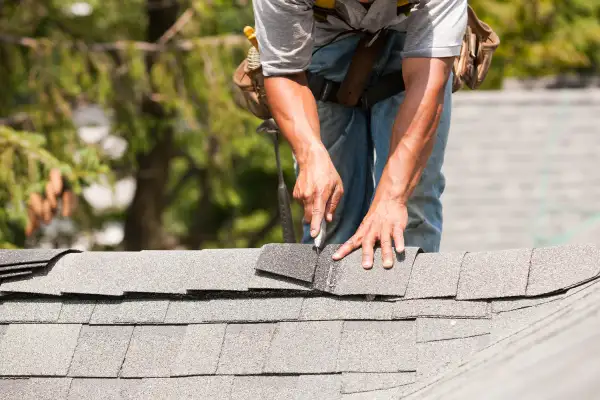5 Things to Know Before You Replace Your Roof

The roof is arguably the most important component of your house. After all, it keeps water out of the building. And while nobody likes having to pay to replace a roof, the critical and aesthetic function it serves should help ease the pain of spending $8,000 to $20,000 on the work. (The average, according to 2014 cost data collected by home improvement site Angie's List, is around $11,000.)
For that kind of money, you want to make sure job is done right. Here's what you need to know.
1. Shop around
Some roofers don’t worry much about customer satisfaction since replacing a roof is a once-every-few-decades job, which means they don’t have to count on repeat business. Plus, many homeowners (mistakenly) choose their roofer based largely on price, and many roofing contractors hire low-wage workers so they can deliver the lowest possible bids. All of which is to say: You need to be extremely careful whom you hire. Get references from neighbors (or tradespeople or lumber yards) that you trust, and check major roofing manufacturer websites (certainteed.com, gaf.com, owenscorning.com) for lists of certified installers. Then request client references from anyone you’re considering, and check out their reputations on Angie’s List and their backgrounds on ContractorCheck, suggests Stockbridge, Mass., general contractor Jay Rhind.
2. Strip away the old
You’re permitted to have two layers of asphalt shingles on your roof, so if there’s only one in place now, you can have a new layer installed right on top. That will save you as much as $1,000 and a fair bit of mess, but it means the roofer can’t inspect and repair the decking and flashing underneath. If you live in a cold climate, stripping away the old roof allows the contractor to install ice and water shield, a rubber membrane used to prevent leaks at the eaves in the event of ice buildup. The tear-off gets a lot more complicated if you have something other than asphalt up there: If you can see original wood shingles on the underside of your roof when you’re up in the attic, you’ll need not only to tear everything off, but also to install new plywood decking, all of which likely adds $5,000 or more to your costs.
3. Go top shelf
To make sure you don’t have to worry about your roof again—and give you some selling points when you’re ready to move—go for top-quality products. That means: 50-year-shingles (shingles with the longest available warranty add just $300 to $500 to your total cost) with an “architectural” look (varying color and thickness that creates upscale character for just $250 to $750 extra). You'll also want to opt for copper flashing, the most durable metal for sealing the joints where a roof meets a wall or another roof, which might add $1,000 or more compared with aluminum.
4. Pay attention to the paperwork
For such a quick job—two to five days, depending on the size and style of the roof—roofing involves a tremendous amount of liability and money. Three documents are essential: 1) Most towns require a building permit for a roofing project; this can help to ensure that your contractor follows building code. Plus, your roof warranty is likely void if you don’t get the permit. 2) A written contract that specifies all of the agreed-to details, products, and costs of the project. 3) A letter addressed to you from the contractor’s insurance carrier confirming that the specific project is covered under the roofer’s worker’s compensation and liability plan.
5. Don't pay until you see the magnet
If you’ve had old roofing stripped off, about 10,000 nails came with it—and most landed on your grass, mulch, and driveway. Contractors have a tool that makes it easy to pick these up—a giant magnet on wheels that they pass over the yard to grab the dropped fasteners so they don’t cause any flat tires or injuries. But workers don’t always remember to bring it to the jobsite. So if you’re seeing nails around (you’ll know), when your roofer comes by for the final payment, ask him to bring the magnet and do the honors while he’s there.
